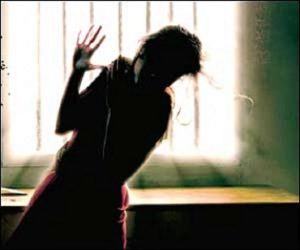On this International Women’s Day, let us look at the challenges that minority women and girls face, in addition to those of an average Pakistani woman.
Gender experts often use the term ‘double jeopardy’ to explain the disadvantage and disparity of opportunities for women in general. In this context, women from minority communities face ‘quadruple jeopardy’.
The estimated population of minority women in Pakistan is 4-5 million. Of these, 95 percent reside in Sindh and Punjab and 92 percent belong to Hindu, Scheduled Cast or Christian communities. A large number of these women work in informal labour sectors; agriculture-based professions, domestic servitude and formal sectors such as brick kilns and sanitation work, individually or with their families. Approximately, up to two percent of minority women join services such as teaching and nursing, with a decreasing ratio as compared to the past.
Relying on the previous national population census (recent data not released), the Christian community was 11 percent behind the average national literacy rate while Hindus and Scheduled Castes were lagging by 20 percent. Though, imaginably, a gender-segregated data might have shown that minority women are even more marginalised in literacy as compared to minority male and majority female counterparts.
A survey I conducted in 2012 (‘Life on the Margins’) showed that the child mortality rate among the Hindu and Christian communities was two percent higher than the national ratio. Hundreds of infant and child deaths in recent years also sadly confirmed this finding. These deaths also explain the sad state of nutrition and mother-child healthcare available to these communities, easily detectable in districts with a concentration of Hindu population in southern Sindh and in katchi abadis of the urban centres throughout Pakistan, including Islamabad.
People think that the provisions and protections afforded by the government are equally available to all citizens and that the marginalised must have missed out on these opportunities due to their own negligence. However, it is important to look deeper into the causes, legal parameters and socio-economic realities.
While legislation in recent years has enhanced legal protection for women at large regarding different forms of violence, minority women and their families live under the risk of forced conversions and false charges under the blasphemy laws. Hundreds of cases can be cited to demonstrate the element of coercion in the conversions and marriages of minor girls and women. Legal procedures, including custodial protection at Dar-ul-Aman, have invariably failed to protect them against this grave human rights violation.
The psychological impact of incidents of violence against minorities entails an endemic sense of insecurity. The horrors of reported cases such as those of Aasia Bibi and Rinkle Kumari and many other unreported cases, scar families so much that a legal redress is seldom sought.
These elements restrain the progress of women belonging to minority communities, for instance, in access to education. However, even when minority girls do get access to education, a multilayered religious discrimination in the education system is a gigantic challenge to overcome. The majority religion is the only religion taught in schools and religious lessons based on the majority faith in almost all subjects have to be learnt and passed which is an impediment to their performance as students. This is just the tip of the iceberg.
Their social and economic vulnerability is exacerbated by legal inequality and lack of equal protection under law. Institutional discrimination on the basis of religion – exemplified in Articles 31, 41 and 91 of the constitution – culminates in religious minorities being treated as second-class citizens. This additional vulnerability of social and institutional discrimination impedes their access to some protections that an average woman can avail.
Thanks to the seats reserved for women and minorities, a few minority women have ascended to political prominence, particularly in the Senate and the National Assembly. However, neither should political representation be taken as a substitute for economic, social and legal rights, nor can it transform the imbedded inequality in the political system easily.
Therefore, besides an effort to increase the political representation of women, which a select group can qualify for, decision-makers will have to adopt measures for more substantial results for the larger number of women from minority communities. Their plight calls for a carefully charted out package for their economic and social wellbeing. Including them in the realm of opportunities in education and healthcare and creating new opportunities through affirmative action is an absolute imperative. Addressing issues of marginalised sections will also reduce the number of out-of-school children, malnutrition, child mortality and a number of other issues impeding our growth as nation.
Finally, Pakistan must embark on the path to outlawing discrimination on any basis. Discrimination ought to be made an offence punishable by law.


